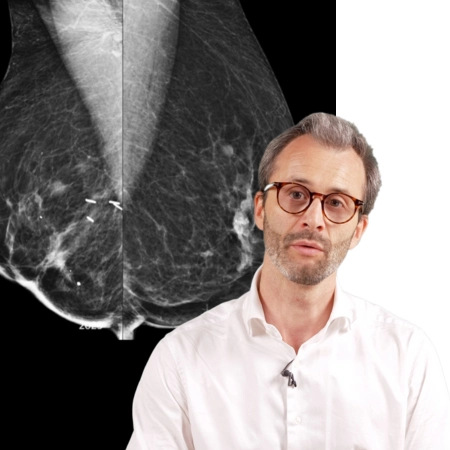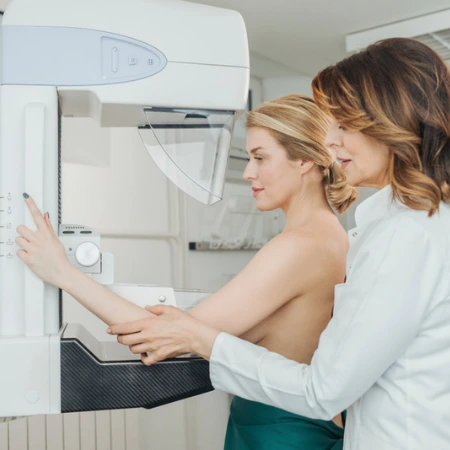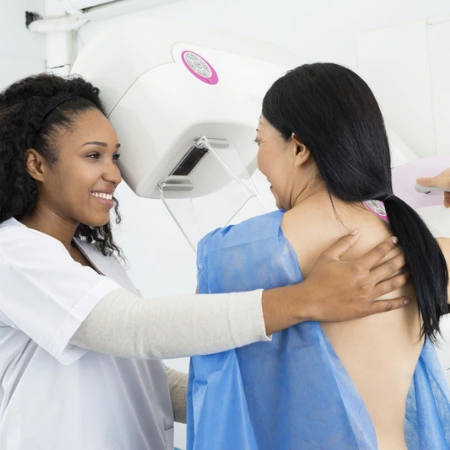

Breast Imaging Interpretation
Enhance your breast imaging skills with expert guidance on mammography, breast ultrasound, and digital breast tomosynthesis.
- Approved by the ASRT (American Society of Radiologic Technologists) for 3.75 Category A+ CE Credits
- Subscription duration: 365 days from purchase date
- Video format available
- Downloadable transcript available
- Meets the CE requirements of the following states: California, Texas, Florida, Kentucky, Massachusetts, and New Mexico
- Meets ARRT® CE reporting requirements
- Accepted by the ARMRIT®
- Hassle-free 30-day full refund policy*
This course will teach you how to confidently interpret mammograms, identify breast lesions, and apply advanced breast imaging techniques like digital breast tomosynthesis and breast ultrasound.
In chapter 1, you’ll start by learning how to read a mammogram, beginning with a clinical assessment before imaging Understanding patient history and performing a physical exam can reveal important signs of abnormalities. You'll also master the key factors for high-quality breast imaging, including proper positioning and artifact reduction to avoid misdiagnosis. We will guide you through a systematic approach to analyzing mammograms, comparing images, and using techniques like the Tabár method to detect subtle changes.
Next in Chapter 2, you'll explore the characterization of breast lesions on mammography using the BI-RADS system. You’ll learn to distinguish between benign and malignant lesions based on shape, margins, and density. This section also explains the role of breast density in cancer detection, how to classify calcifications, and why structured reporting is essential for accurate diagnosis.
Ultrasound plays a crucial role in breast imaging, especially for patients with dense breast tissue. In Chapter 3, you’ll discover when ultrasound is preferred and how it enhances lesion evaluation. This part of the course covers scanning techniques, proper patient positioning, and Doppler assessment. You'll also learn how to differentiate benign from suspicious masses and use advanced tools like elastography to improve accuracy.
Finally, in Chapter 4, we’ll introduce digital breast tomosynthesis (DBT) and its advantages in breast imaging. You’ll see how DBT improves cancer detection by reducing tissue overlap, increasing the visibility of lesions, and lowering recall rates. We’ll also discuss its role in screening and diagnosis, including its limitations, such as challenges in evaluating calcifications.
This course is designed for radiologic technologists, radiologist assistants, sonographers, and radiologists who want to enhance their expertise in breast imaging. Whether you're learning how to read a mammogram, evaluating breast lesions, or integrating digital breast tomosynthesis into practice, this course will give you the tools and confidence to improve patient care.
| Discipline | Major content category & subcategories | CE Credits provided |
| BS-2016 | Procedures | |
| Pathology | 0.75 | |
| Surgical/Treatment Changes and Interventional Procedures | 0.75 | |
| RA-2018 | Procedures | |
| Thoracic Section | 1.50 | |
| SON-2019 | Procedures | |
| Superficial Structures and Other Sonographic Procedures | 1.50 | |
| MAM-2020 | Procedures | |
| Anatomy, Physiology, and Pathology | 1.50 | |
| Mammographic Positioning, Special Needs, and Imaging Procedures | 1.50 | |
| BS-2021 | Procedures | |
| Pathology | 0.75 | |
| Breast Interventions | 0.75 | |
| RA-2023 | Procedures | |
| Thoracic Section | 1.50 | |
| SON-2024 | Procedures | |
| Superficial Structures and Other Sonographic Procedures | 1.50 | |
| MAM-2025 | Image Production | |
| Image Acquisition and Quality Assurance | 0.75 | |
| MAM-2025 | Procedures | |
| Anatomy, Physiology, and Pathology | 1.50 | |
| Mammographic Positioning and Procedures | 0.75 |
Section 1: How to Read a Mammogram
Section 2: Characterization of Breast Lesions on Mammography
Section 3: Breast Ultrasound
Section 4: Digital Breast Tomosynthesis
Section 5: Clinical Cases
|
Get it now!
One-time payment. No hidden fees. No extra charges per credit.
|
|
|



